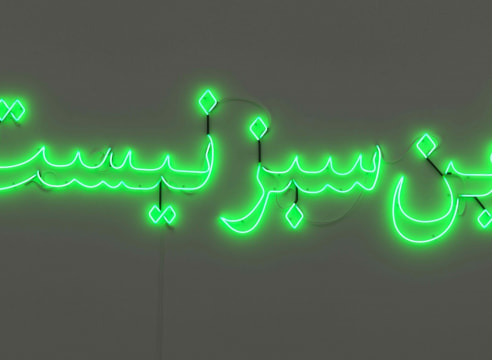
Charles Hossein Zenderoudi was born in 1937 in Tehran. After his preliminary studies in mid 1950s, he entered the Fine Art College of Tehran University to study painting.
His interest in Iranian-Islamic traditions, his acquaintance with calligraphy and his affiliation and sympathy for traditions were what helped him to reach his own personal unique style. In the late 1950s that Zenderoudi created the Saqqa-khaneh movement. A reaction to Western art and the relentless clash between traditional and modernist Iranian art, the Saqqa-khaneh lobbied for the incorporation of national, folkloric and religious elements into Iranian art. In essence, Saqqa-khaneh took pride in Iranian-ness and sought to mesh Iranian heritage with Contemporary art, proposing a re-reading of cultural content by means of a referential continuity.
He left Iran for Paris in 1961 and chose painting as his career. He met artists like Alberto Giacometti, Stephen Poliakoff and Lucio Fontana and writers such as Eugène Ionesco.
Zenderoudi has received many accolades and won many international awards, starting at the biennales of Venice in 1960 and São Paolo in 1961, when he was still in his early 20s. Following the 1963 acquisition by New York’s Museum of Modern Art of his K+L+32+H+4, which not only marked the first of his paintings to enter a major public collection but also served as a catalyst for other museums to follow suit, most of the world’s prominent art institutions have sought to include his works in their collections – London’s British Museum, Paris’s Centre Pompidou and Copenhagen’s Statens Museum, among others.
He has been living in Paris and New York since 1961.